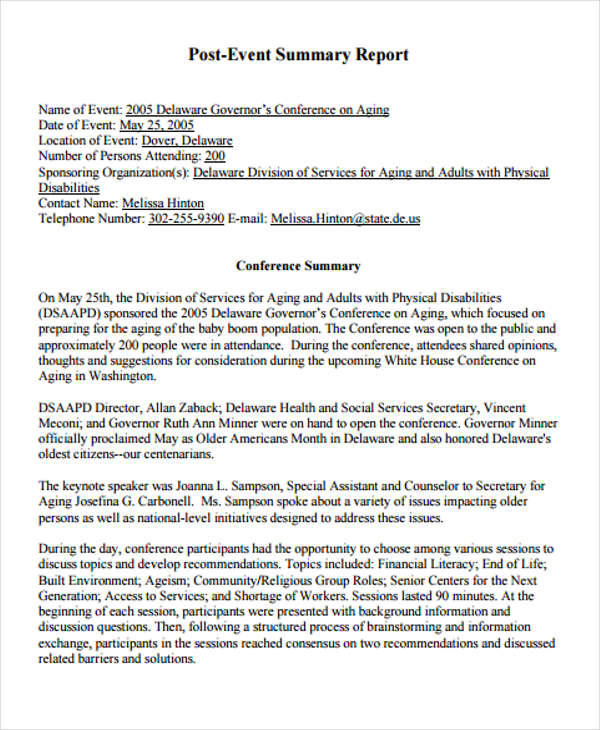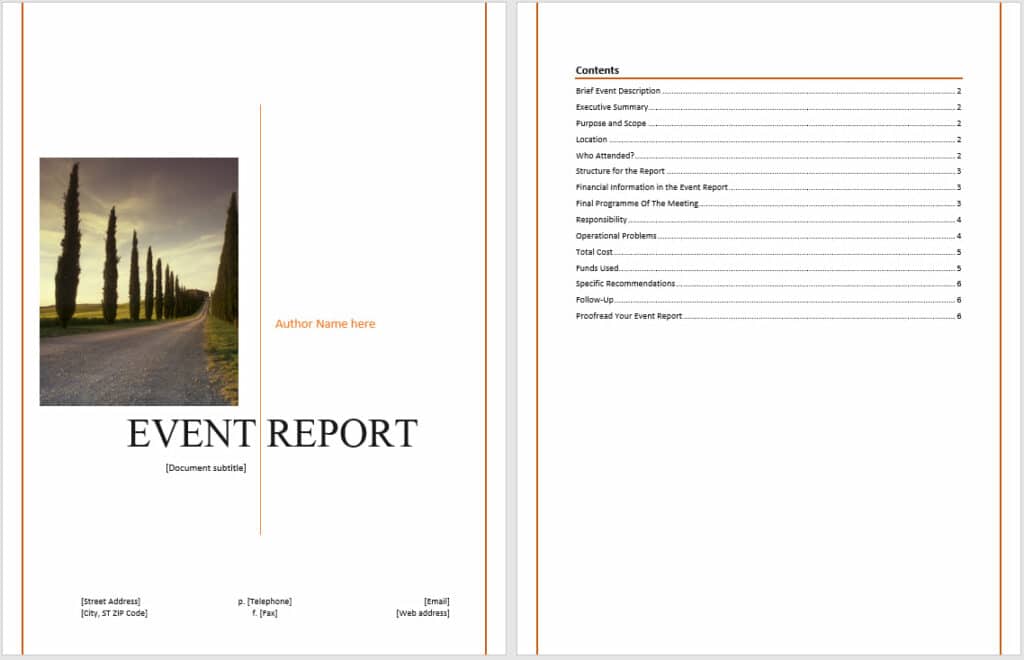
Creating a post-event report template is an essential part of any event you organize. This is because a report gives you and your client valuable ins ight as to how effective the event actually was.
Furthermore, such reports help you plan more effectively in the future. Since an event report involves a lot of data regarding the number of attendees, the expenses, the revenue, and other similar information, collecting all the data in one place can reveal some very interesting trends and allow you to make even better decisions in the future.
Get access to advanced real-time analytics. Generate insightful reports and more. Try Gevme for free
A post-conference report is an important summary of the whole event that pulls out the most relevant post-event statistics and data on any key goals or recommendations for your f uture events. That’s why it’s essential to write an event report after the event concludes
Preparing to write a post-event report
Writing an excellent wrap-up report demands careful preparation. If you want to write a successfu l report, follow these helpful professional tips:

Once your post about your event’s success is ready, publish it, making sure to also share some significant figures, via social media and any other channels you regularly use.
Also, you may come up with a good post-event video. Here’s a successful example of the Websummit, when they made a separate post-event video:
Such kind of content is good for sharing on social media and promotion.
Get access to advanced real-time and post-event analytics. Generate insightful reports and more. Try Gevme for free
All of the event data should be fed into an event report definition. This will demonstrate the value of the event to your business. The following elements are important to include in this repo rt to give senior project stakeholders all the information they need to make final decisions on future event budgets, speakers, formats, floor plans, and so much more.
The official executive summary must be an independent document: an outline of the entire event that spells out the most important insights and discoveries from the rest of the report. It must incorporate the data on any key objectives or proposals for future event organisation.
Defining the objectives as a feature of your planning will make your post-event report less demanding to compose (and your event simpler to run). These objectives must take into consideration a substantial profit return for targets and be stated in your report introduction.
Research your audience. Your objectives should be measurable, actionable results that will benefit your future events. Use survey apps to provide questionnaires to your attendees. If the event doesn’t meet the goals, use this tool to discuss how you can ensure that they will be met at future events or revise them for the next time around.
Engage your event audience with live surveys, polls, etc. Try Gevme for free
Audience metrics are an essential data point: collect the total numbers of visitors, sponsors, and exhibitors with their demographics, job titles, and responses. This data will help you tailor future events to your target needs and collect statistics that will be vital to show to your partners in the future.
This segment of your report will originate from dialogs with representatives, speakers, and exhibitors. Use it to investigate the assessment of your event program and determine whether participants were happy during the event.
It’s critical to audit the area of your event. Not only will it help you choose where to hold future events, but it might also give you some understanding of participant numbers. You also need to survey other pa rts of post-event reporting, including:
You must provide a marketing summary of promotion activities, highlighting both successes and failures. Areas to address in a post-event wrap up report include:
Write down all sponsorship information and results to make post-event report. Items to cover include:
Survey staff resources from your event and give proposals to future events. This will enable you to get expenditure plans ready for the following year’s meetings, conferences, and other events.
Taking photos may not help you with your report writing directly. However, it does let you create a good rapport with the audience. Also, it may be required by your client for administrative purposes.
In addition, it may be used to create profiles in the future for various branding and marketing activities.
Nevertheless, ensure that the event policy allows you to take photos in the first place. Secondly, get permission from the audience before taking their photos. This is because some attendees may prefer not to have their photos taken.
If possible, it’s always a good idea to tape the entire event or any important sessions in the event. This is because such recordings can be referred to in the future to assess how the event unfolded, and what were the dynamics with regard to how the event was organized.
However, don’t forget to include a little description below a video clip or an audio script in the report. This will help the reader know the significance of the content.
This is an opportunity to sum up the post-event report: a concise discourse of what functioned well and where there is space for improvement. To close your post-event report, summarise the key suggestions featured throughout the report. Incorporate suggestions from staff, patrons, speakers, and participants.
Now you kn ow what to include in a post-event report. Here are the pro tips for how to optimise your post-event reporting:
There are various online tools that you can use to write a good report. GEVME, as mentioned earlier, provides some very useful tools that help you categorize your data, analyze the data and navigate through it effectively with the use filters and other inbuilt features.
You can always make use of an event report sample to help you with your report.
Below is an event report template that you may use to get started.

You can use the table of contents as a guide to help you with the type of information you’ll need to collect and write.
Writing a post-event wrap-up report can be a hefty task. However, it does offer a number of benefits in terms of providing you with key information, based on which you can make critical decisions with regards to your event.
Follow the steps mentioned above, and you will have a perfect report in no time. The events you organize deserve actionable wrap-up reporting – get started for free and learn how to automate your post-event experiences.